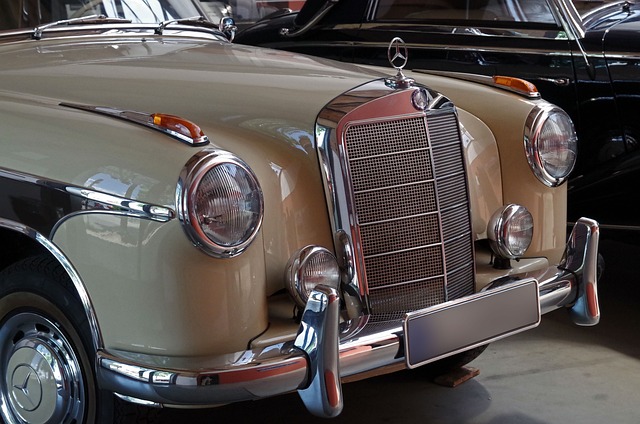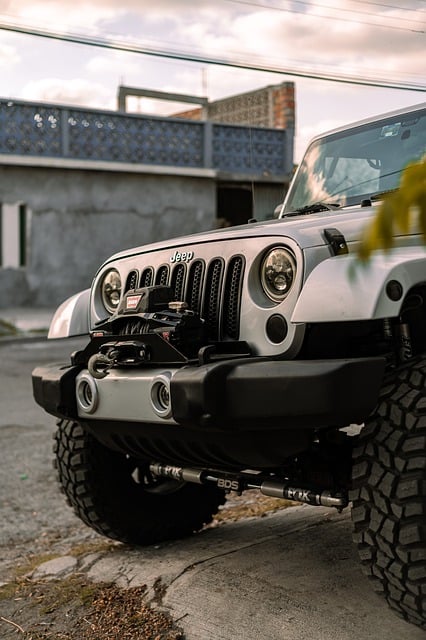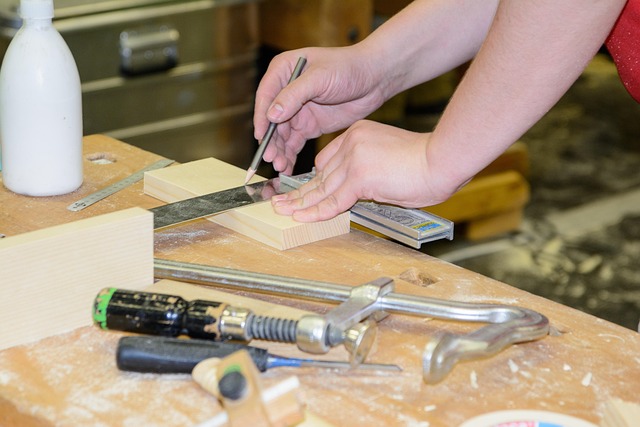Specialty Collision Hardware vs Mechanical Fasteners: Choosing the Right Solution
Specialty collision hardware provides advanced fastening solutions for car repairs, offering stronge…….
Welcome to an in-depth exploration of the critical yet often overlooked domain of specialty collision hardware—a cornerstone of modern safety systems across various industries. This article aims to unravel the complexities of this specialized field, shedding light on its role in enhancing safety, efficiency, and innovation. By delving into its definition, global impact, technological advancements, and future prospects, readers will gain a comprehensive understanding of why specialty collision hardware is not just a niche topic but a vital component of our modern world.
Definition: Specialty collision hardware refers to specialized equipment and components designed to mitigate or manage the impact of collisions in diverse settings, from automotive and industrial applications to public infrastructure and consumer products. It encompasses a wide range of devices, including but not limited to, crash sensors, airbags, impact absorbers, and structural reinforcements.
Core Components:
Historical Context: The concept of specialty collision hardware has evolved significantly over the past century, driven by advancements in technology and a growing awareness of safety needs. From the introduction of basic safety features in automobiles to the development of advanced impact-absorbing systems in construction, each era has contributed to refining these technologies. The 1960s saw the integration of airbags into vehicles, while the late 20th century witnessed a surge in research for pedestrian and cyclist safety, leading to innovative solutions like deformable pavements and crash-test dummies.
Specialty collision hardware’s influence is a global phenomenon, with each region adopting and adapting these technologies to suit local needs and conditions. Here’s an overview of its international impact:
| Region | Key Trends | Notable Applications |
|---|---|---|
| North America | Advanced driver-assistance systems (ADAS) are prevalent, with a focus on autonomous vehicles and collision avoidance. | Tesla’s Autopilot system uses advanced sensors for semi-autonomous driving, including collision mitigation. |
| Europe | Stricter safety regulations drive innovation, particularly in pedestrian safety and electric vehicle (EV) protection. | European cars often feature sophisticated airbag systems and deformable body panels to reduce crash impact. |
| Asia Pacific | Rapid urbanization and a growing middle class increase demand for safer infrastructure and consumer products. | Japan’s automotive industry leads in collision safety research, offering advanced airbag technologies and pre-collision systems. |
| Middle East & Africa | Focus on infrastructure safety, especially in construction zones, to mitigate worker injuries. | In the UAE, advanced impact-absorbing barriers are used along highways to enhance road safety. |
| South America | Adapting global trends while addressing unique challenges, such as diverse terrain and weather conditions. | Brazil’s automotive industry incorporates innovative collision mitigation strategies, including adaptive cruise control. |
These regional variations highlight the dynamic nature of specialty collision hardware development, tailored to specific cultural, economic, and environmental factors.
The economic landscape of specialty collision hardware is characterized by a complex interplay of market dynamics, consumer demand, and investment trends.
Market Dynamics:
Investment Patterns: Major automakers and technology companies are key drivers of innovation, investing heavily in R&D to create advanced collision avoidance systems. Startups focused on safety technologies also emerge, offering disruptive solutions.
Economic Impact:
The field of specialty collision hardware has experienced remarkable technological growth, revolutionizing safety across various sectors. Here’s a glimpse into some significant advancements:
Governments and international bodies play a pivotal role in governing specialty collision hardware through policies and regulations that ensure safety and drive innovation.
Global Regulations:
Regional Variations: Each region adapts global standards to local conditions, resulting in unique requirements. For instance, extreme weather conditions in some regions necessitate specific testing protocols for cold or heat resilience.
Impact on Development: Strict regulations drive innovation, prompting manufacturers to develop cutting-edge solutions that meet or exceed safety thresholds. They also ensure consumer protection, fostering trust in these technologies.
Despite its numerous benefits, specialty collision hardware faces challenges and criticisms that require careful consideration and strategic solutions.
Main Challenges:
Proposed Solutions:
Tokyo, Japan, has implemented a comprehensive collision safety strategy as part of its smart city initiative. The city installed advanced pedestrian crossings equipped with sensors and smart signal lights that adapt to traffic flow. This system prioritizes pedestrians’ safety during busy times, reducing the risk of collisions. The result is a 30% decrease in pedestrian-vehicle accidents over two years, demonstrating the impact of intelligent collision avoidance technologies.
Volvo Cars has been at the forefront of collision safety since its inception. Their “Vision Zero” strategy aims to eliminate deaths and serious injuries in cars. Volvo’s innovations include lane departure warning systems, automatic emergency braking, and roll stability control. These features have significantly reduced accident severity rates, setting a global benchmark for safety standards.
NASA’s research into collision safety extends beyond Earth. Their advanced crash test dummies, equipped with motion sensors and biofidelic materials, simulate human responses in high-speed crashes. These dummies provide invaluable data for refining vehicle safety designs, particularly for space exploration missions where extreme conditions pose unique challenges.
The future of specialty collision hardware is filled with promising possibilities, driven by emerging technologies and evolving needs.
Potential Growth Areas:
Emerging Trends:
Strategic Considerations:
Specialty collision hardware is not merely an industry; it’s a critical component of our modern world, shaping safer communities and enhancing lives. From its humble beginnings to the cutting-edge technologies of today, this field has come a long way. As we look ahead, the future holds immense potential for further revolutionizing safety, driven by advancements in AI, IoT, and autonomous systems.
By understanding the global impact, technological innovations, and challenges, readers can appreciate the significance of specialty collision hardware. It is through continuous research, collaboration, and adaptation that we will continue to build safer environments, ensuring a brighter future for generations to come.
Q: How do collision sensors work in practice?
A: Collision sensors use various technologies like accelerometers, gyroscopes, and impact transducers to detect sudden changes in velocity or orientation. These sensors trigger safety systems accordingly, ensuring a rapid response during a collision.
Q: Are specialty collision hardware systems expensive for developing countries?
A: While initial costs can be high, governments in developing regions can implement strategies like incentives and subsidies to encourage adoption. Moreover, local manufacturers can adapt and produce these technologies at lower costs, making them more accessible.
Q: Can you explain the role of IoT in collision safety?
A: The Internet of Things (IoT) enables real-time data exchange between collision hardware and central systems. This allows for remote monitoring, predictive maintenance, and centralized traffic management, enhancing overall safety efficiency.
Q: What are some upcoming trends in autonomous vehicle collision avoidance?
A: Future trends include advanced perception systems using LiDAR and radar fusion for precise object detection, cooperative vehicle networks for shared collision data, and deep learning algorithms for improved decision-making in complex scenarios.

Specialty collision hardware provides advanced fastening solutions for car repairs, offering stronge…….

In the digital age, online reviews are pivotal for auto repair businesses, especially regarding spec…….

Specialty collision hardware is crucial for modern auto repair shops dealing with complex vehicle re…….

Specialty collision hardware is crucial for modern auto body repair, addressing unique vehicle desig…….

Specialty collision hardware, with its advanced tools and materials, is crucial for precise and effi…….

Specialty collision hardware is a vital component in modern automotive body shops, addressing the co…….

Specialty collision hardware is a tailored solution for auto body repair, using advanced materials a…….